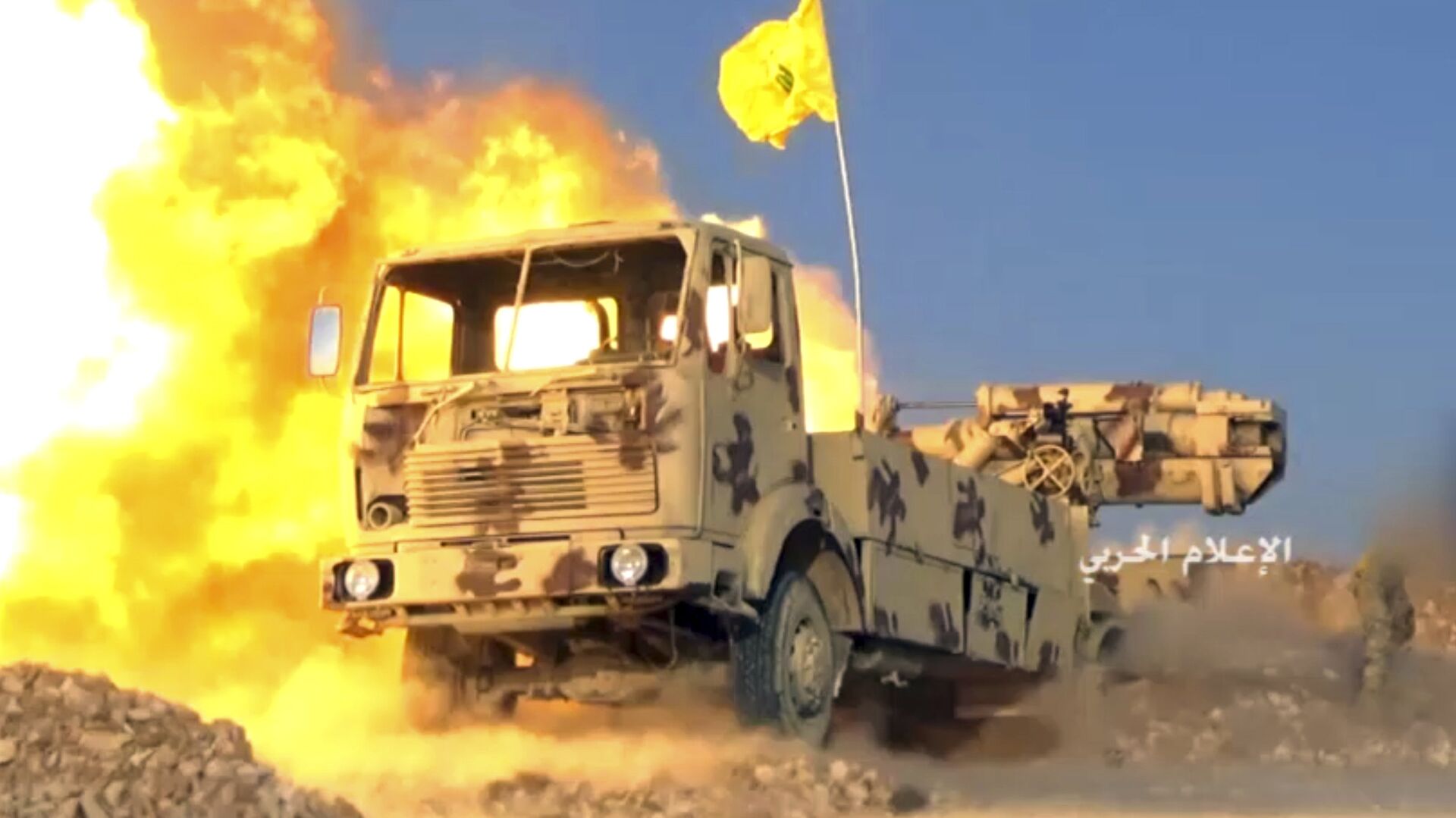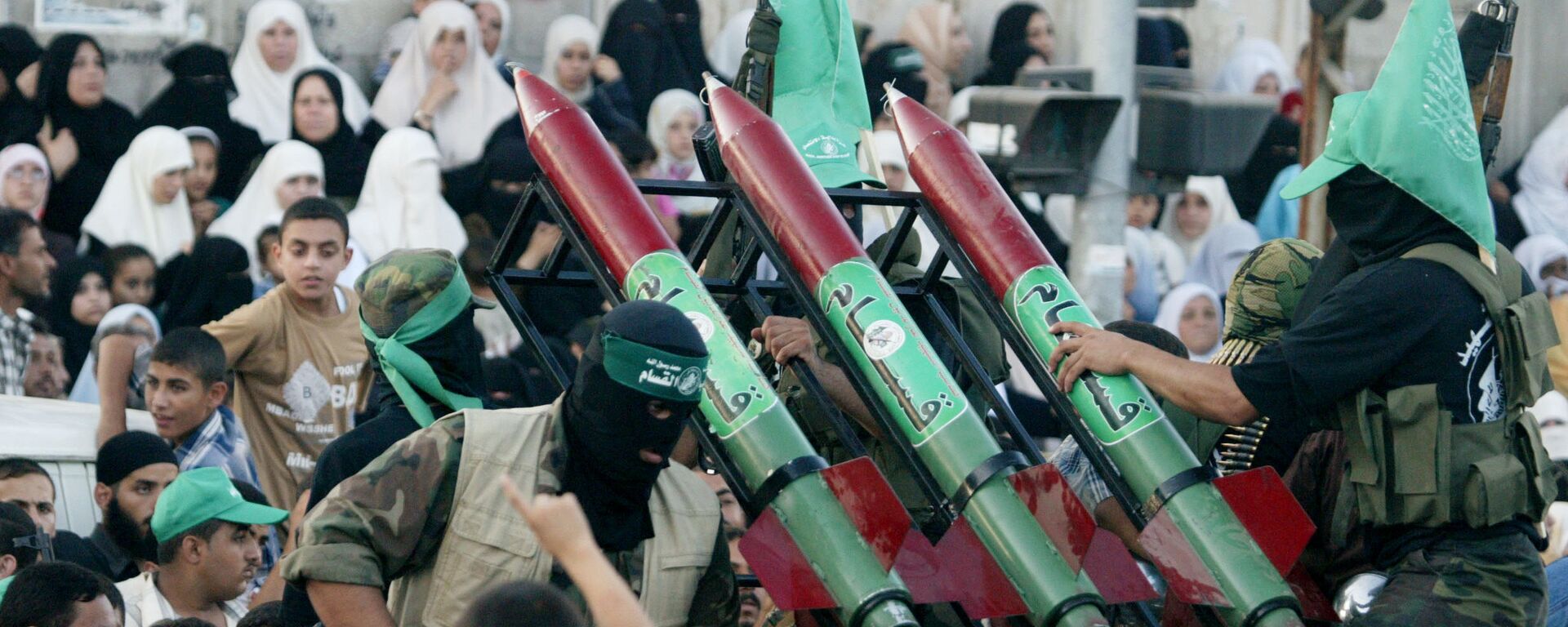https://sputnikglobe.com/20211031/idf-launches-massive-weeklong-drill-simulating-war-with-hezbollah-combined-with-domestic-unrest-1090371194.html
IDF Launches Massive Weeklong Drill Simulating War With Hezbollah Combined With Domestic Unrest
IDF Launches Massive Weeklong Drill Simulating War With Hezbollah Combined With Domestic Unrest
Sputnik International
In May, an Israeli court’s ruling to evict six Palestinian families from a neighbourhood of East Jerusalem triggered public unrest which culminated in an... 31.10.2021, Sputnik International
2021-10-31T18:53+0000
2021-10-31T18:53+0000
2021-10-31T18:56+0000
hezbollah
hamas
israel
missile
rocket
drills
https://cdn1.img.sputnikglobe.com/img/105578/53/1055785324_0:32:2420:1393_1920x0_80_0_0_e3ead4f33c4c8864717c092754f1bf02.jpg
The Israeli military and the Defence Ministry’s National Emergency Management Authority (NEMA) kicked off a massive week-long exercise on Sunday, with the drills, set to run until Thursday, expected to simulate a full-scale war with Lebanon’s Hezbollah movement.In addition to simulating a fight against Hezbollah, the drills are also meant to test how the military, emergency services and internal security forces would respond to domestic strife inside mixed Arab-Jewish cities in Israel proper. During the May Gaza War, cities including Lod, Acre and Ramallah were engulfed in deadly clashes, which culminated in the deaths of several Palestinian protesters and two Jewish residents, caused over a thousand injuries, and led to tens of millions of dollars in property damage.“What concerns me as chief of staff of the Home Front Command: One is the issue of precision-guided munitions and the effect that they will have on our ability to function and on things in in the world of incoming fire alerts. The second is the rate of fire and Hezbollah’s ability to conduct truly massive rocket barrages at specific geographic areas – I’ll use the phrase ‘demolishing the front line’ – directed fire at the communities near the border,” the commander added.Bar stressed the exercises would “put into practice” what he and his staff learned through a close study of May’s Gaza conflict, with the drills expected to “test how those lessons were enacted.”NEMA director Yoram Laredo told reporters that his agency has a document for reference “about how a multi-front war will look in terms of its scope and significance,” with the drills expected to give it “a degree of accuracy about possible events and how we direct and refine the exercise so that it can really be effective.”He added that Sunday’s drilling included a special focus on police, and simulated “nationalistic-based riots on many fronts.”In addition to the military and NEMA, police, fire and rescue, ambulance workers and other government services are expected to be involved, carrying out simulations of the evacuation of northern populated areas, and carrying out air raid tests.Hezbollah is No HamasUnlike Hamas, which is concentrated in the besieged Gaza Strip, and whose fighters are forced to construct mostly simple homemade rockets out of scarce materials, Hezbollah is believed to possess over 100,000 rockets and missiles of various ranges, including precision-guided missiles. The group already demonstrated the capabilities of its rockets in the 34-day Lebanon War in 2006, when it fired nearly 4,000 of its 15,000 rocket and missile arsenal into Israel, and effectively bogged down an Israeli offensive until the United Nations brokered a ceasefire.The Israeli military and media observers have expressed serious apprehensions about Hezbollah’s rocket and missile capabilities, given that even Hamas’s considerably weaker rocket arsenal demonstrated in May its potential to overwhelm Israel’s Iron Dome missile defence system when rockets were fired simultaneously in massed volleys.
https://sputnikglobe.com/20211018/israel-anticipates-up-to-2500-rockets-fired-daily-in-case-of-war-with-hezbollah---report-1089994622.html
https://sputnikglobe.com/20210515/iranian-media-reveals-how-some-hamas-rockets-have-been-defeating-israels-iron-dome-1082902998.html
israel
Sputnik International
feedback@sputniknews.com
+74956456601
MIA „Rossiya Segodnya“
2021
News
en_EN
Sputnik International
feedback@sputniknews.com
+74956456601
MIA „Rossiya Segodnya“
Sputnik International
feedback@sputniknews.com
+74956456601
MIA „Rossiya Segodnya“
hezbollah, hamas, israel, missile, rocket, drills
hezbollah, hamas, israel, missile, rocket, drills
IDF Launches Massive Weeklong Drill Simulating War With Hezbollah Combined With Domestic Unrest
18:53 GMT 31.10.2021 (Updated: 18:56 GMT 31.10.2021) In May, an Israeli court’s ruling to evict six Palestinian families from a neighbourhood of East Jerusalem triggered public unrest which culminated in an 11-day battle between the Israeli military and Gaza-based militants led by Hamas. Nearly 300 civilians were killed in the fighting, most of them Palestinians in the Gaza Strip and the West Bank.
The Israeli military and the Defence Ministry’s National Emergency Management Authority (NEMA) kicked off a massive week-long exercise on Sunday, with the drills, set to run until Thursday, expected to simulate a full-scale war with Lebanon’s Hezbollah movement.
In addition to simulating a fight against Hezbollah, the drills are also meant to test how the military, emergency services and internal security forces would respond to domestic strife inside mixed Arab-Jewish cities in Israel proper. During the May Gaza War, cities including Lod, Acre and Ramallah were engulfed in deadly clashes, which culminated in the deaths of several Palestinian protesters and two Jewish residents, caused over a thousand injuries, and led to tens of millions of dollars in property damage.
“We will test what we learned and experienced at levels I didn’t anticipate in terms of the domestic front,” IDF Home Front Command chief of Staff Brig. Gen. Itzik Bar
said Sunday, recalling May’s violence and commenting on the new drills.
“What concerns me as chief of staff of the Home Front Command: One is the issue of precision-guided munitions and the effect that they will have on our ability to function and on things in in the world of incoming fire alerts. The second is the rate of fire and Hezbollah’s ability to conduct truly massive rocket barrages at specific geographic areas – I’ll use the phrase ‘demolishing the front line’ – directed fire at the communities near the border,” the commander added.
Bar stressed the exercises would “put into practice” what he and his staff learned through a close study of May’s Gaza conflict, with the drills expected to “test how those lessons were enacted.”
The drills will include simulations of the consequences of Hezbollah firing its vast arsenal of missiles and rockets into Israel, including possible attacks, attacks striking toxic chemical storage sites inside the country, major power outages and hospitals overwhelmed with injured civilians.

18 October 2021, 00:05 GMT
NEMA director Yoram Laredo told reporters that his agency has a document for reference “about how a multi-front war will look in terms of its scope and significance,” with the drills expected to give it “a degree of accuracy about possible events and how we direct and refine the exercise so that it can really be effective.”
He added that Sunday’s drilling included a special focus on police, and simulated “nationalistic-based riots on many fronts.”
In addition to the military and NEMA, police, fire and rescue, ambulance workers and other government services are expected to be involved, carrying out simulations of the evacuation of northern populated areas, and carrying out air raid tests.
Unlike Hamas, which is concentrated in the besieged Gaza Strip, and whose fighters are forced to construct mostly simple homemade rockets out of scarce materials, Hezbollah is believed to possess over 100,000 rockets and missiles of various ranges, including precision-guided missiles. The group already demonstrated the capabilities of its rockets in the 34-day Lebanon War in 2006, when it fired nearly 4,000 of its 15,000 rocket and missile arsenal into Israel, and effectively bogged down an Israeli offensive until the United Nations brokered a ceasefire.
The Israeli military and media observers have expressed serious apprehensions about Hezbollah’s rocket and missile capabilities, given that even Hamas’s considerably weaker rocket arsenal demonstrated in May its potential to overwhelm Israel’s Iron Dome missile defence system when rockets were fired simultaneously in massed volleys.



